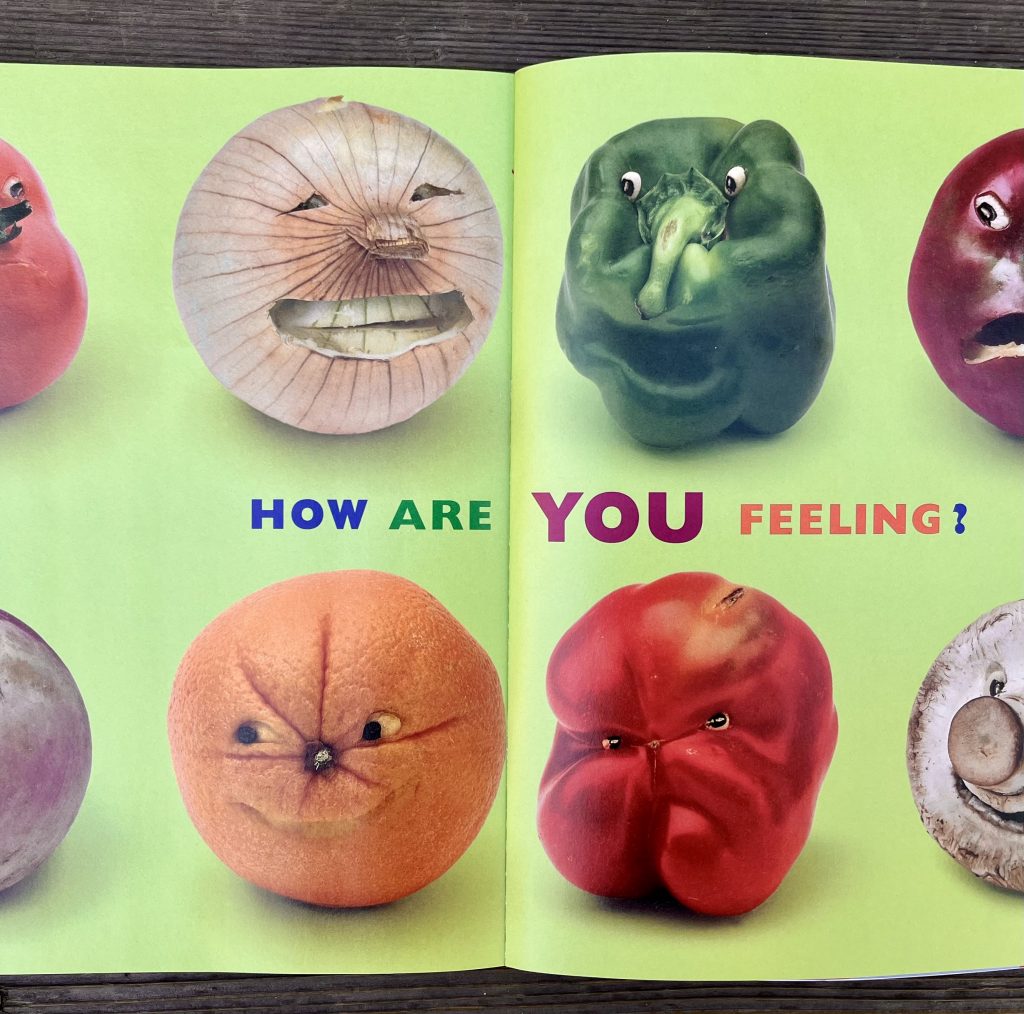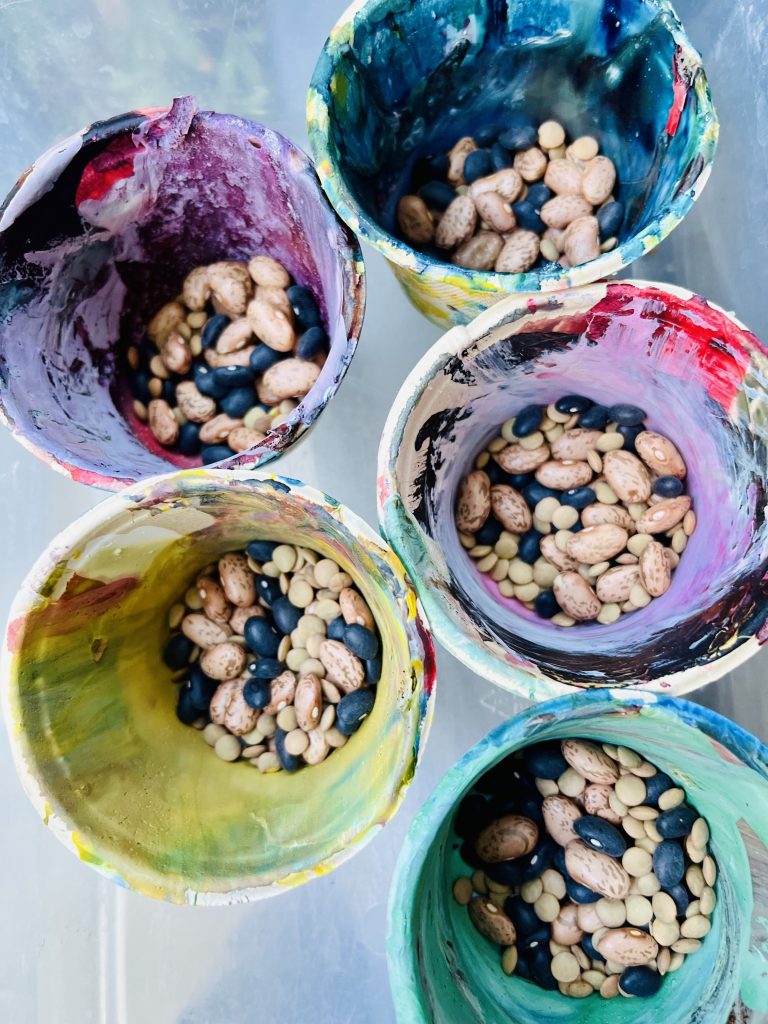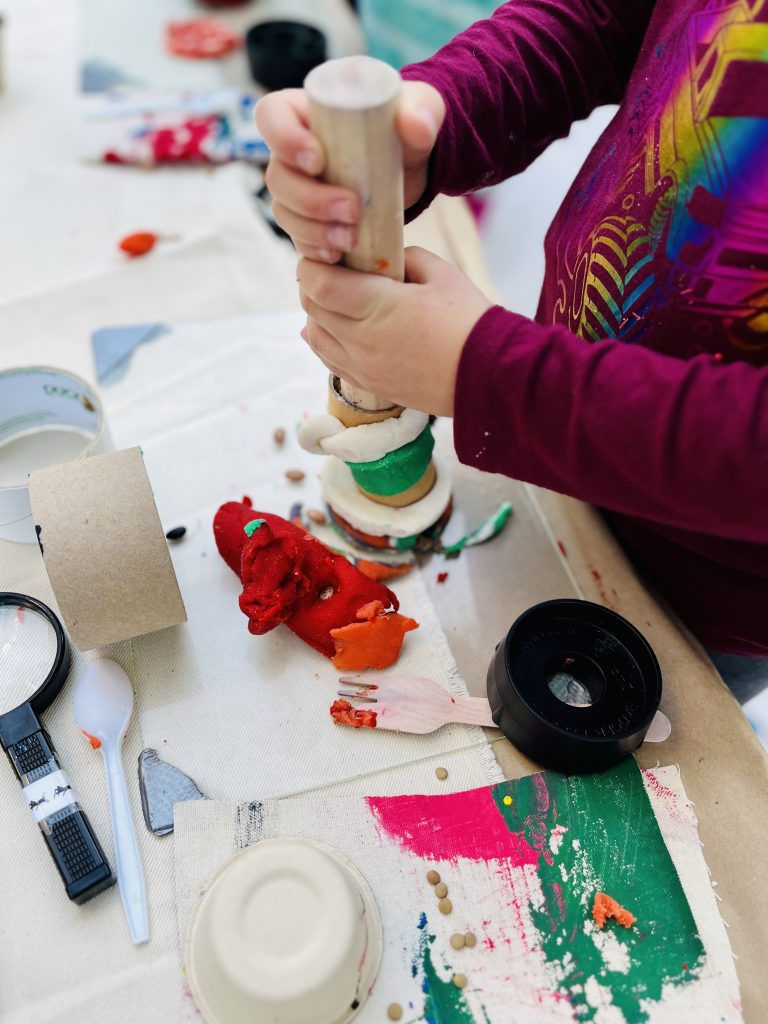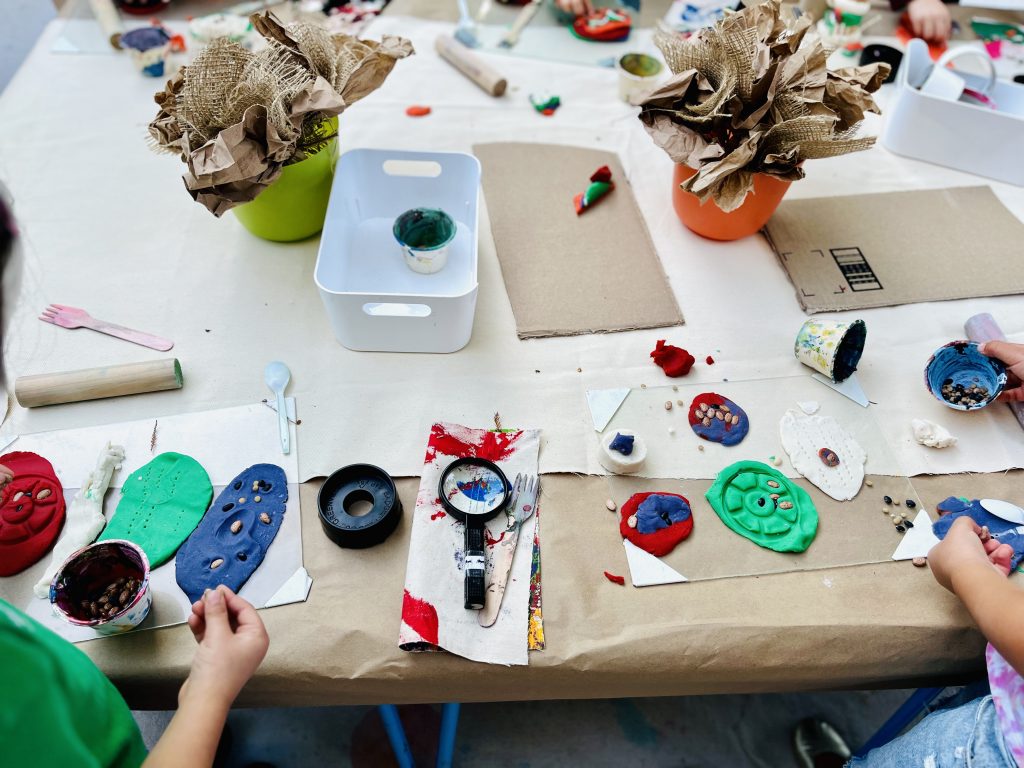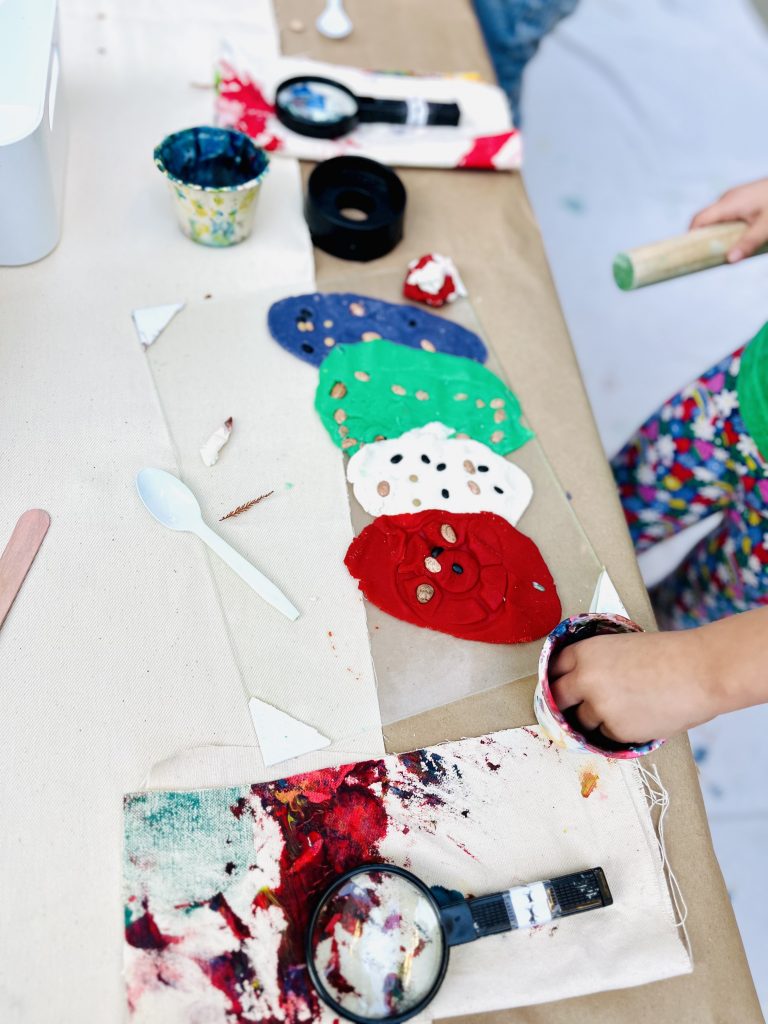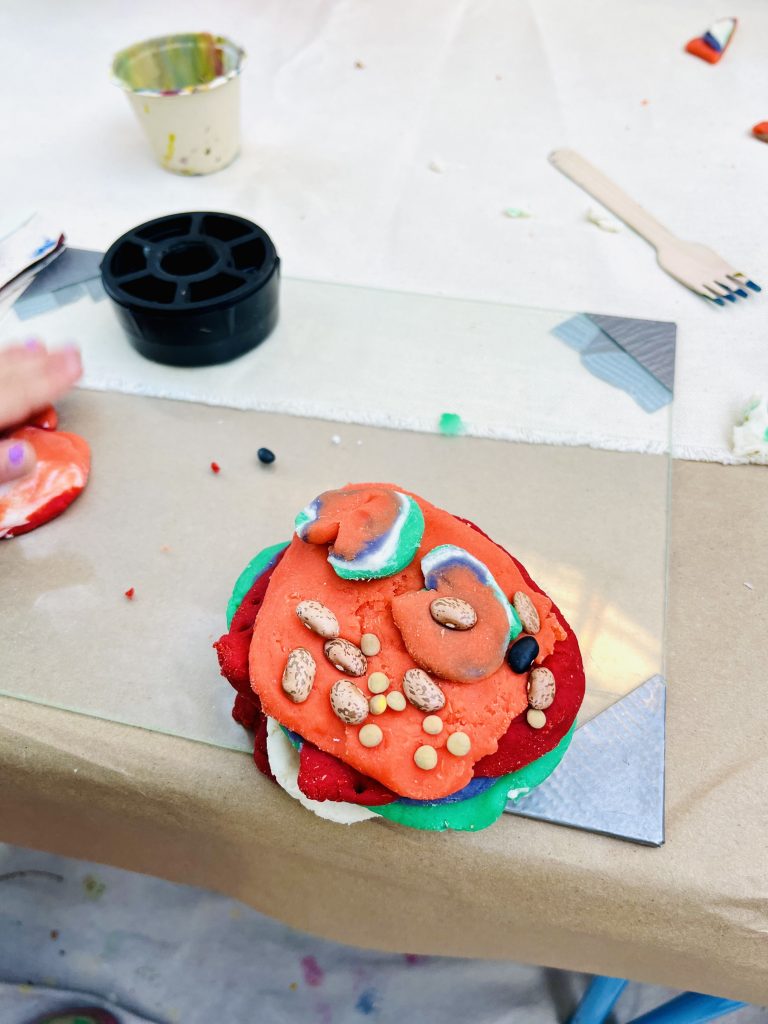After the handprint turkey…
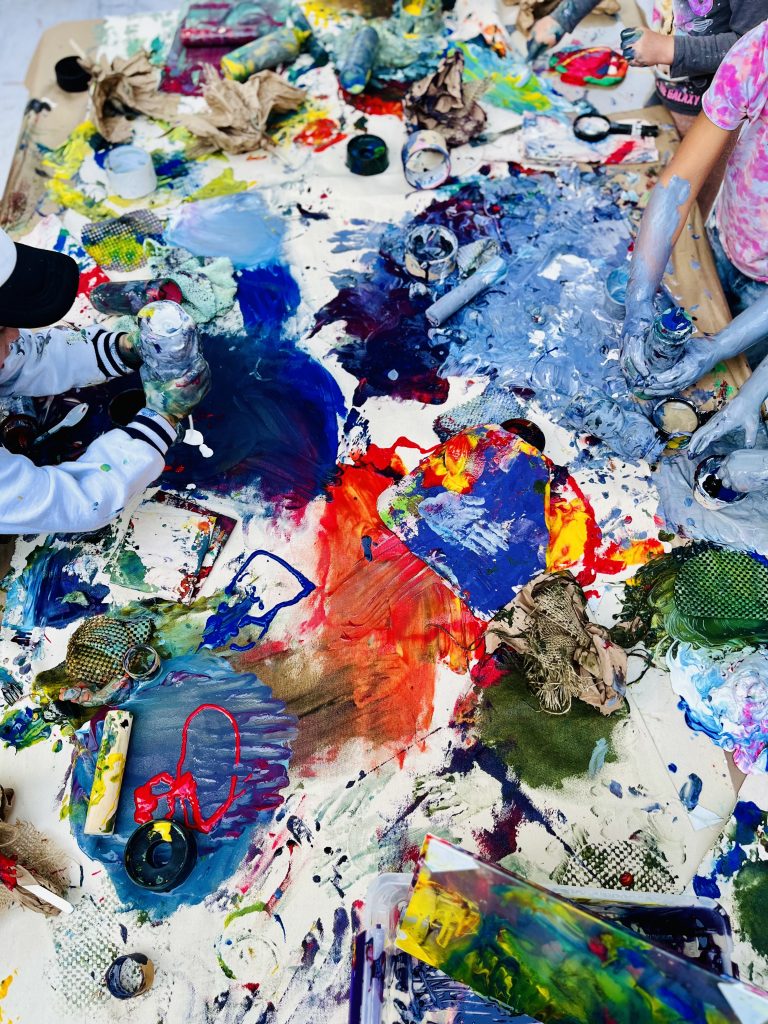
11/22/23 (updated 11/2024)
One perfect handprint–and loving crafting by teachers–is all it takes to make one of those keepsake handprint turkeys your child may have brought home from preschool. (I’ve kept all of mine.) But while they have paint on their hands, why not let them make something more?
We’ve loved doing many versions of these food-inspired projects around Thanksgiving time over the years, and sharing materials around a table is a great way to experience our gratitude for each other and for the fun things we get to do. Thanks for being here, and thanks to all the kids and families who did these projects with us. Happy holidays!
Anne
PLAY
Collage Buffet w/Paint + Fruit and Vegetable Prints
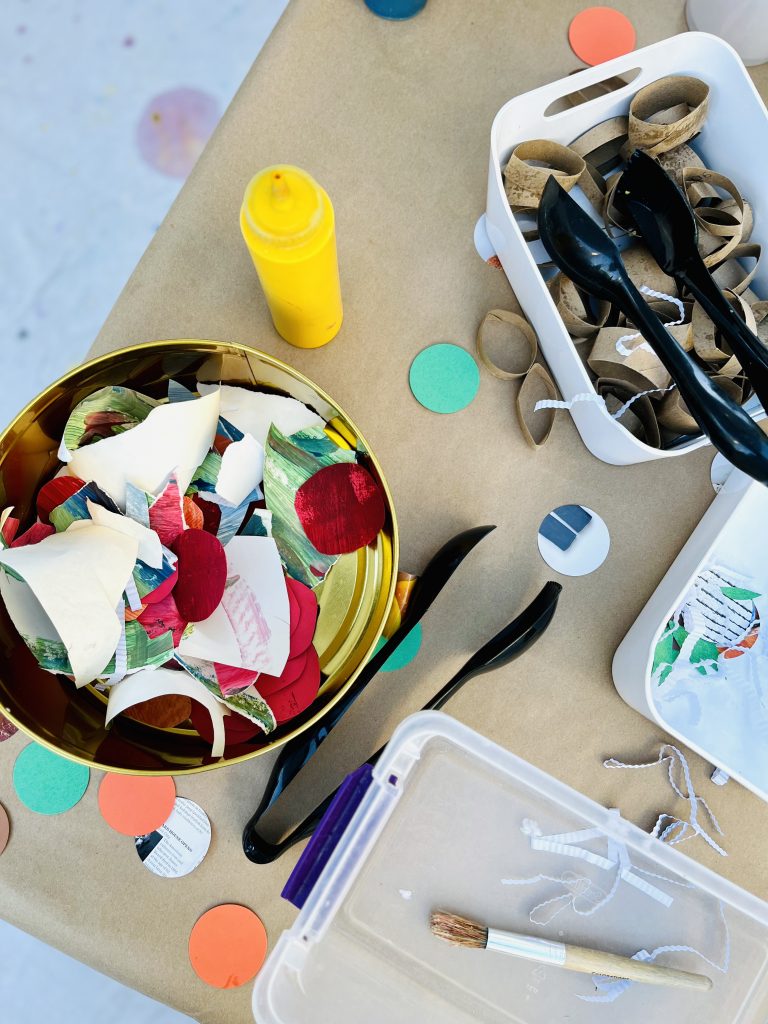
We usually start this activity by making a “salad.” I cut some large rainbow lettuce leaves from discarded paintings, and we rip them up and toss them together in a bowl. Other things that might be in our collage buffet: recycled paper noodles, paper towel roll “pasta,” circle cuts from magazines with images of food, and maybe a few fruit and vegetable shapes pre-cut from kid-painted paper. We always have more paper on hand so that kids can rip or cut their own shapes when they’re ready. Using tongs or other safe serving utensils adds to the fun (while promoting fine motor skills). Form a line, make a plate, and don’t forget the glue and a brush.
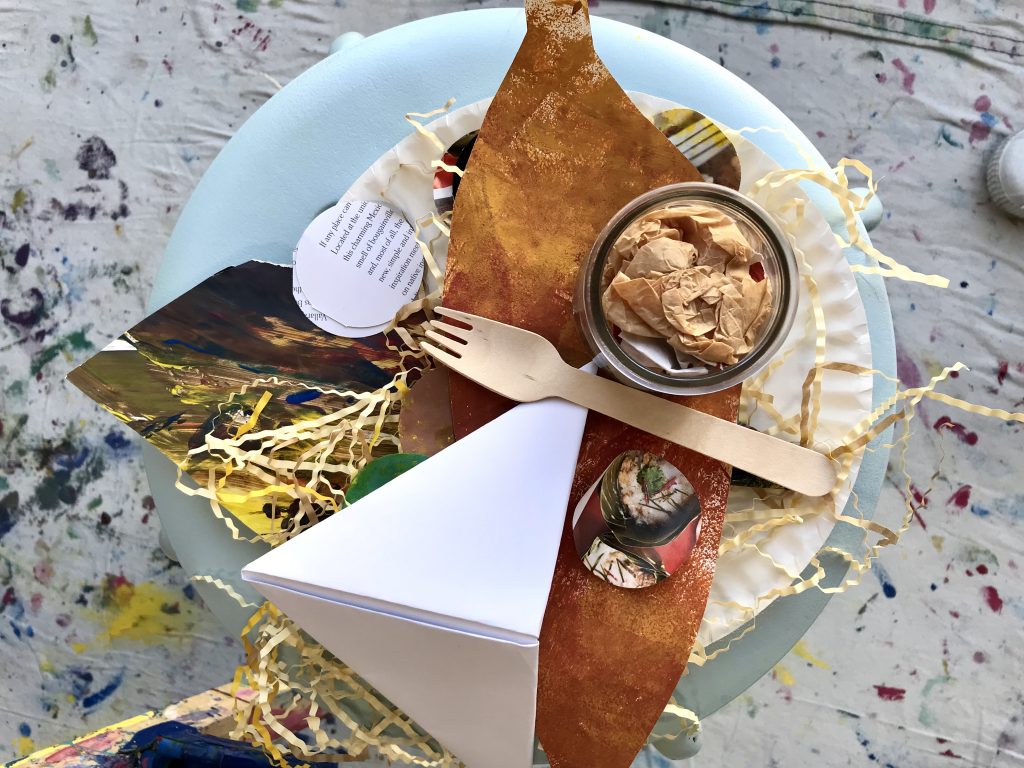
After a little time, I add a few more things to the buffet: self-serve tempera in squeeze bottles, kitchen-themed painting utensils (like forks, spoons, and pastry brushes), and real fruits or vegetables on small trays for printmaking (like apple halves, celery bottoms, a stable piece of cauliflower or broccoli, or halves of mini pumpkins). I ask kids to share just a few of these because, as fun as this is, I dislike wasting food.
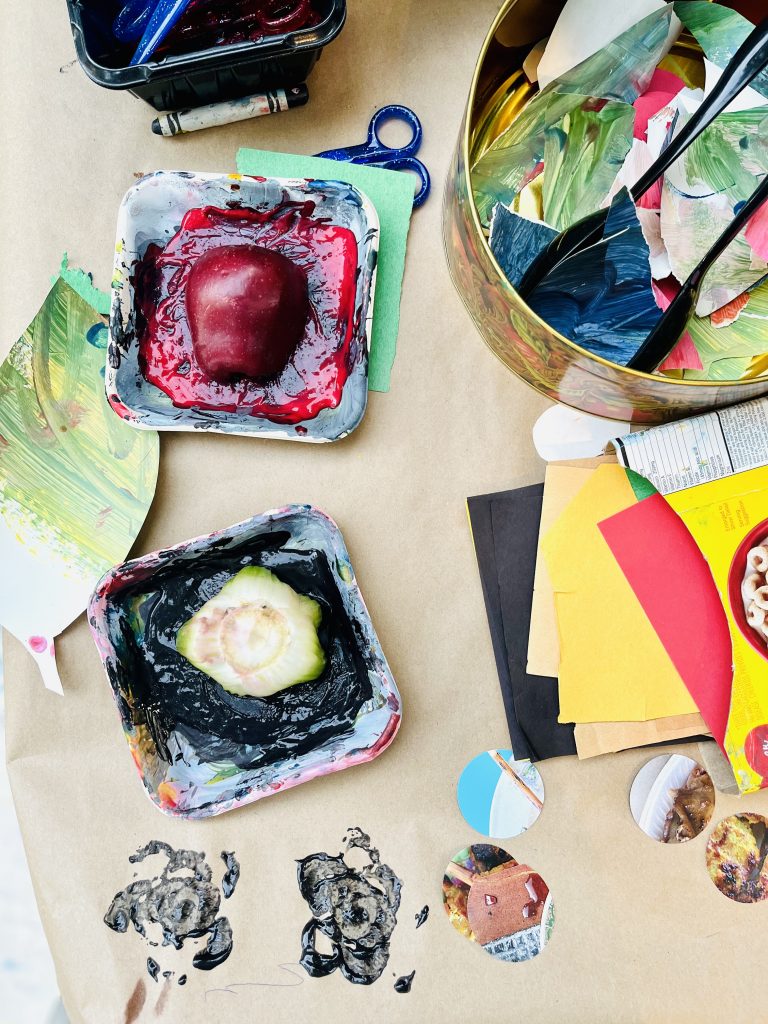
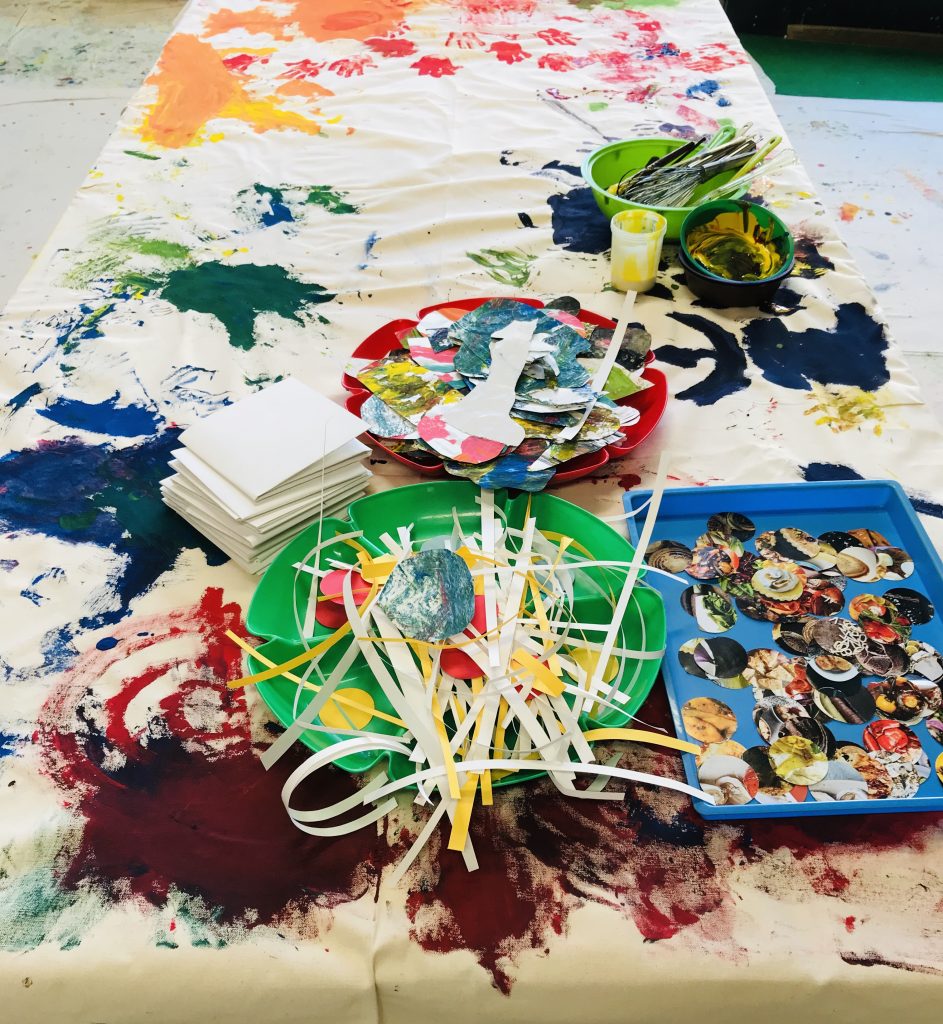
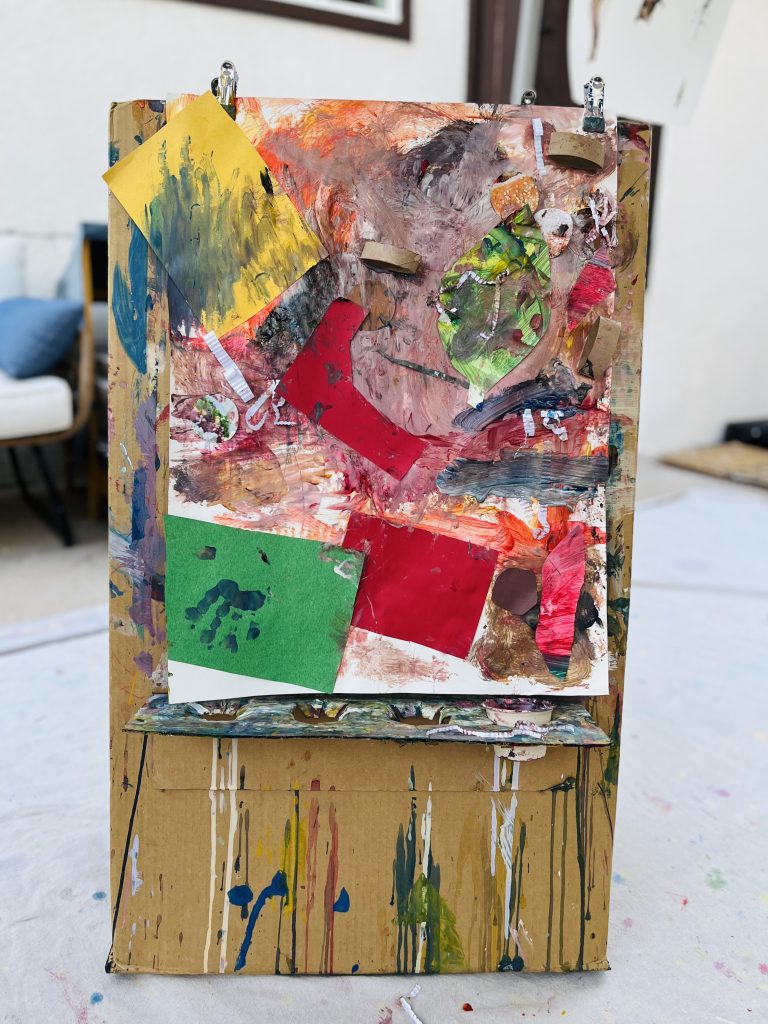
We’ve paired many book readings with this activity, but maybe the perfect one is Eric Carle’s, The Very Hungry Caterpillar. Not only is it a beautiful, simple story about life and food, but kid artists who already know it well may be interested to look more closely at the illustrations, recognize Carle’s collage techniques, and see materials that look similar to their own. (Carle used tissue paper he painted with acrylics for his collages starting in the mid-80s.)
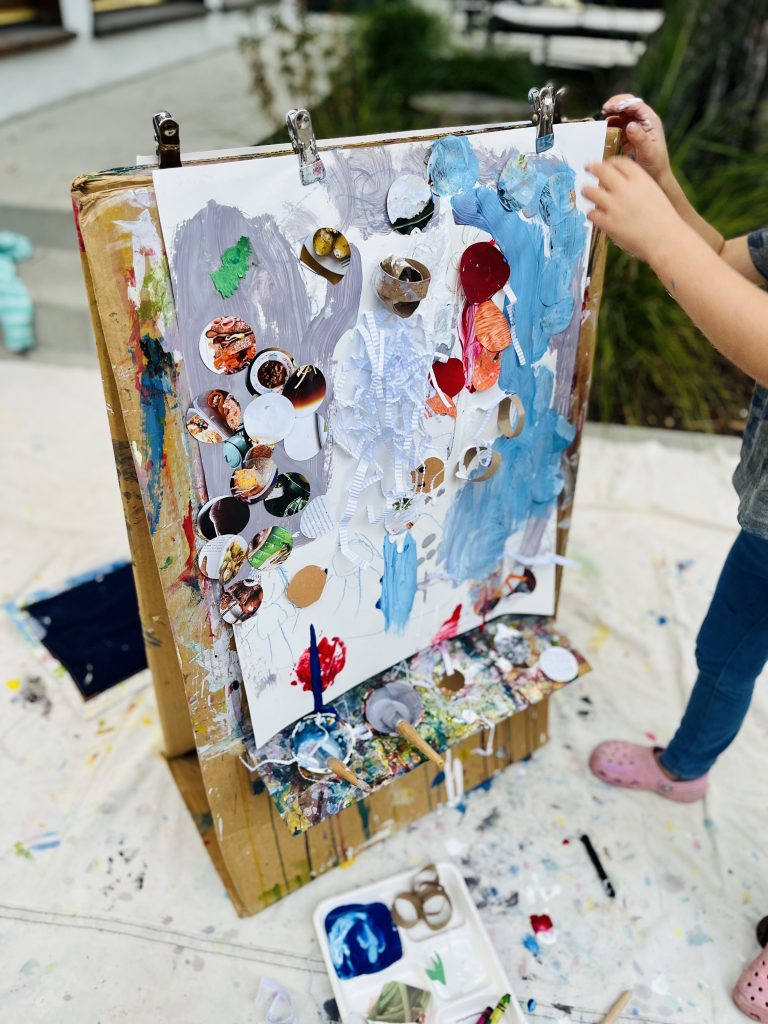
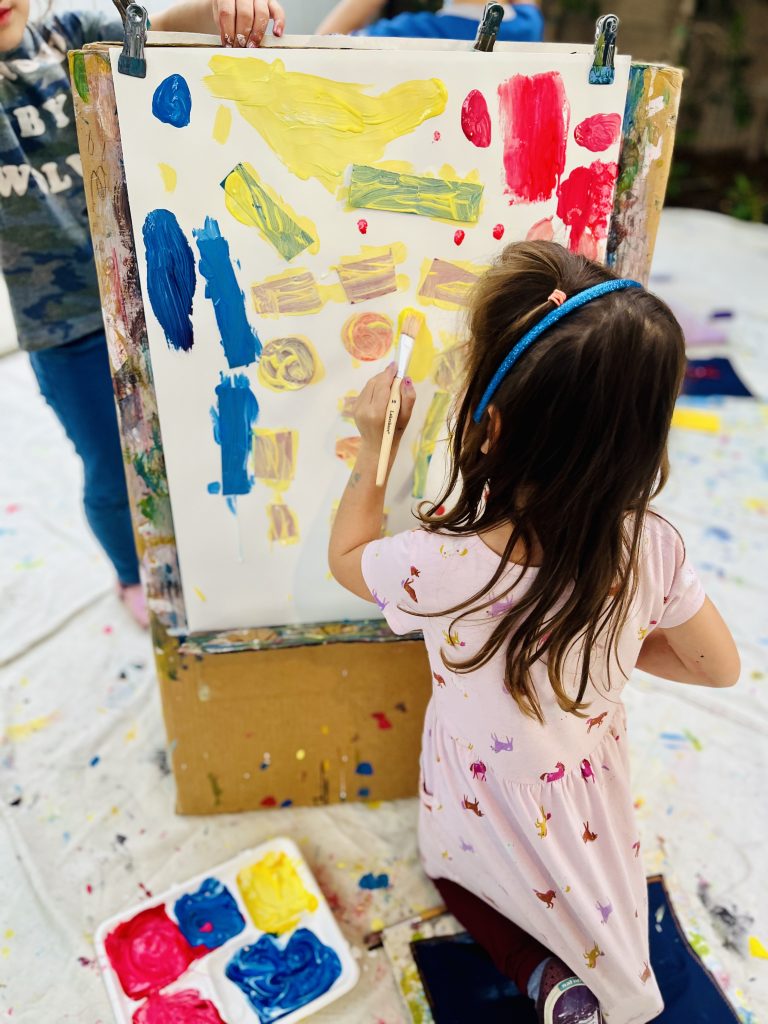

Paint the Tablecloth
For a family style celebration of art, invite kids to paint the tablecloth. We did this at PLAY at a large table, switched to individual “cafe” tables during social-distancing times, and now we do it outside, family style again. Setting the table for a “meal” offers a fun opportunity to invite kids to practice their table manners by asking friends by name to please pass the blue, etc.
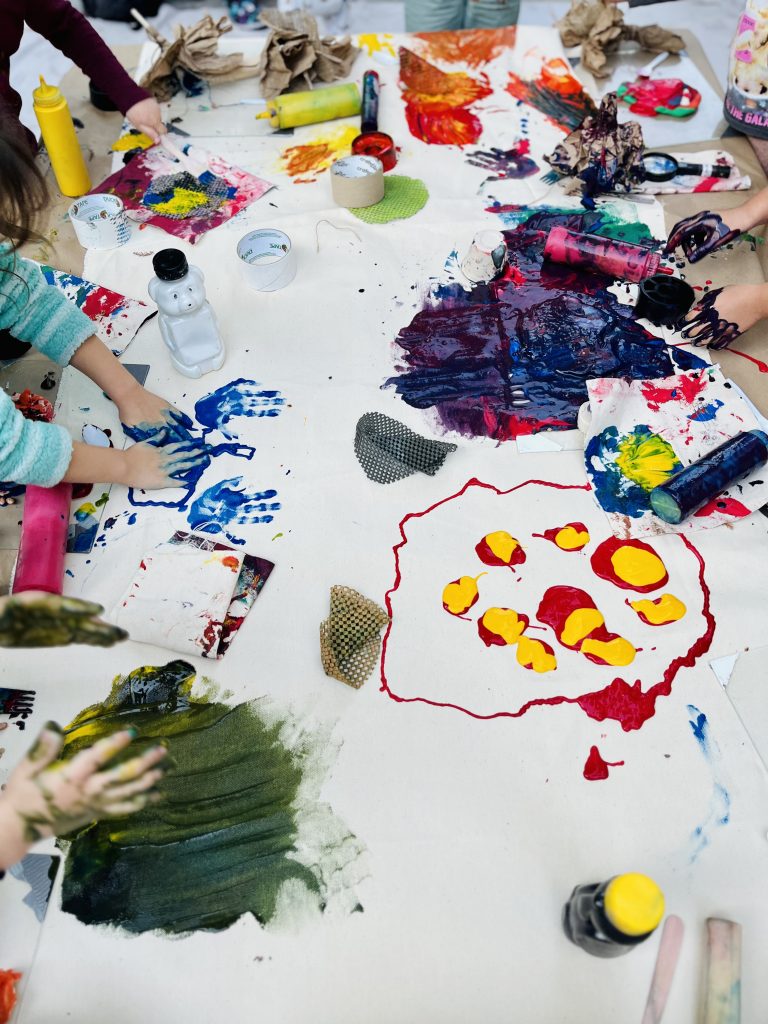
If you try this at home, it’s a good idea to tarp or paper the ground and ask kids in advance to stay in the art area until they’re totally done and ready for clean up. (You can cut down on the volume of paint by using smaller squeeze bottles with thinner tips, which I clearly didn’t do on the days these pictures were taken.)
Again, kitchen-themed painting tools are fun for this, adjusting for safety based on kids ages: eating & cooking utensils like forks, spoons, whisks, pastry brushes, and spatulas, and fancy napkins made from used canvases or folded paper. You might twist together a few brown paper “brushes” that double as centerpieces. (Option: If you want to do a little dough play before you offer paint, chose dough tools that also work as painting tools, like dowel rollers, recycled materials dough cutters/ stamps, and textured silicone pads.)
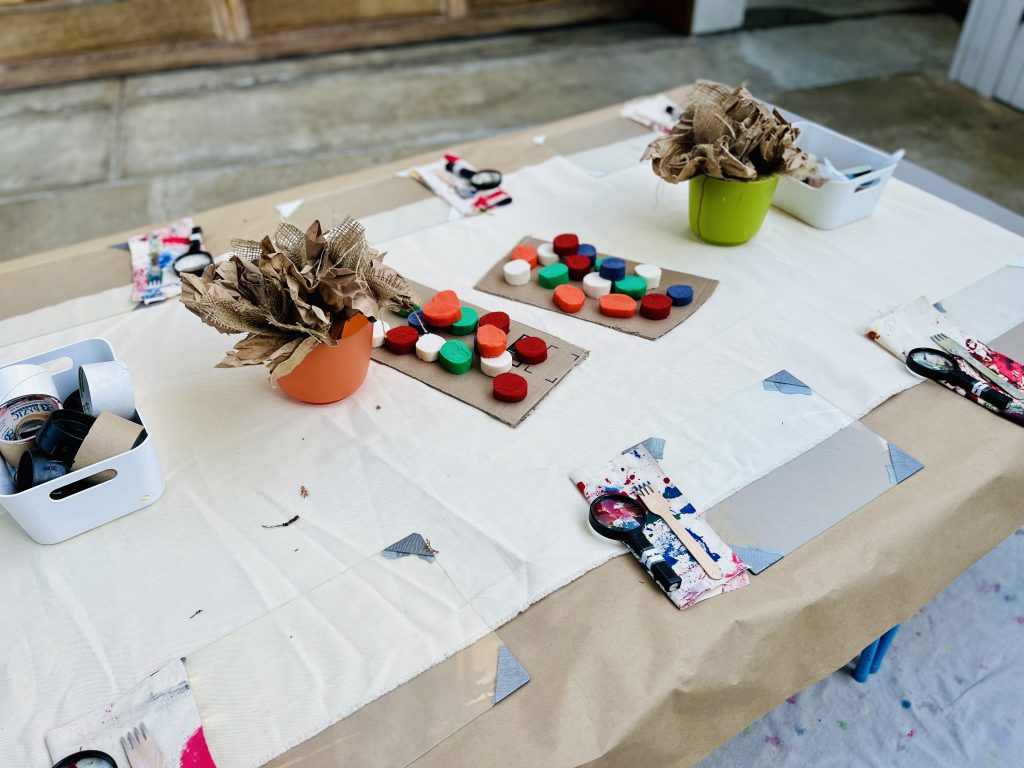
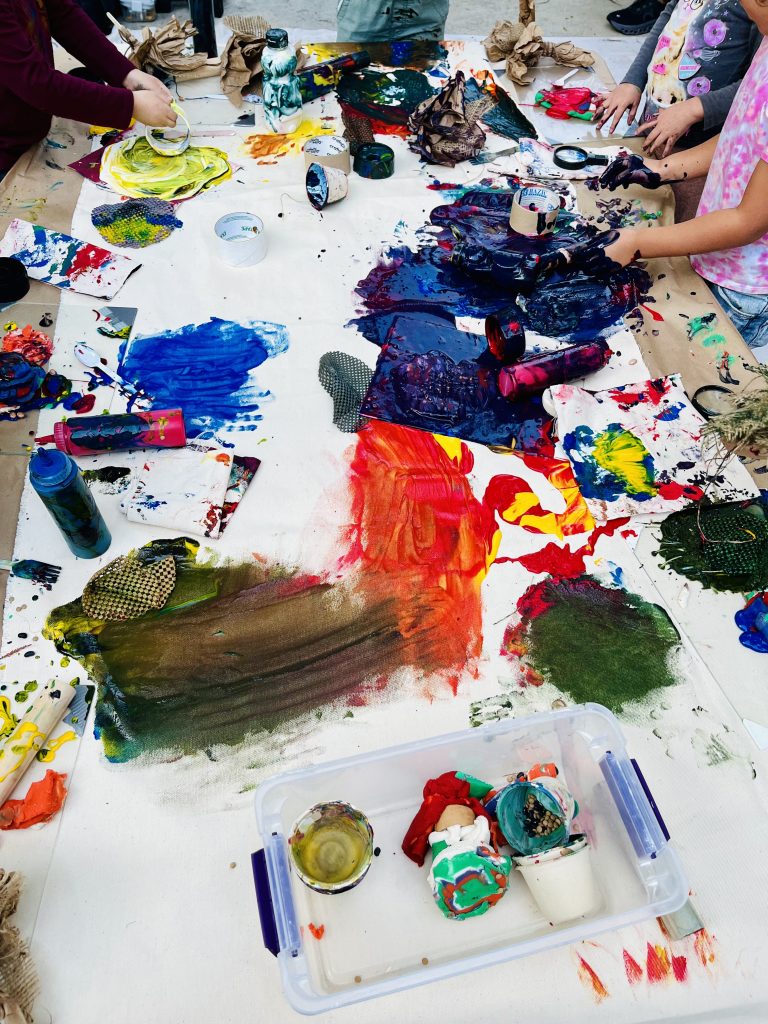
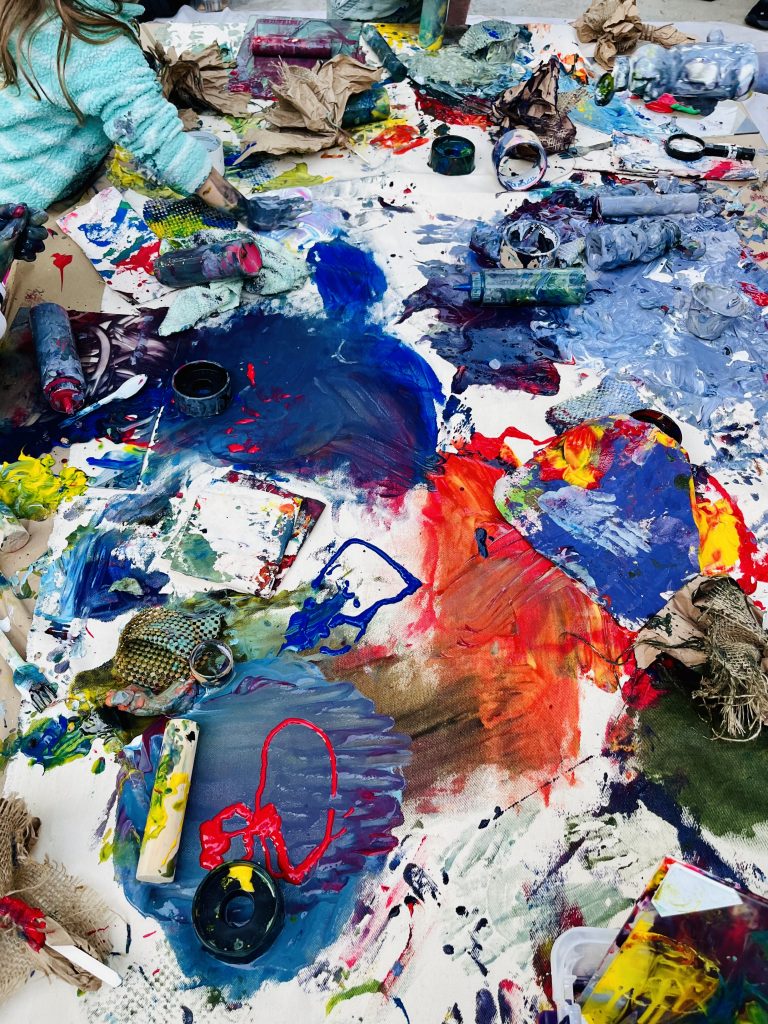
I rarely buy large canvases anymore (because builders’ paper is such a good, eco-friendly alternative for this activity or any group painting surface). But I couldn’t resist when I found wide canvas this November at Remainders Creative Reuse in Pasadena for $4/yard. (They have plenty of $1 yard fabrics suitable for painting on too.) Buying secondhand fabric is one way to delay its trip to the landfill, and you may find even more uses for some of your painted fabric. (I used some to make art class cushions for circle time.)
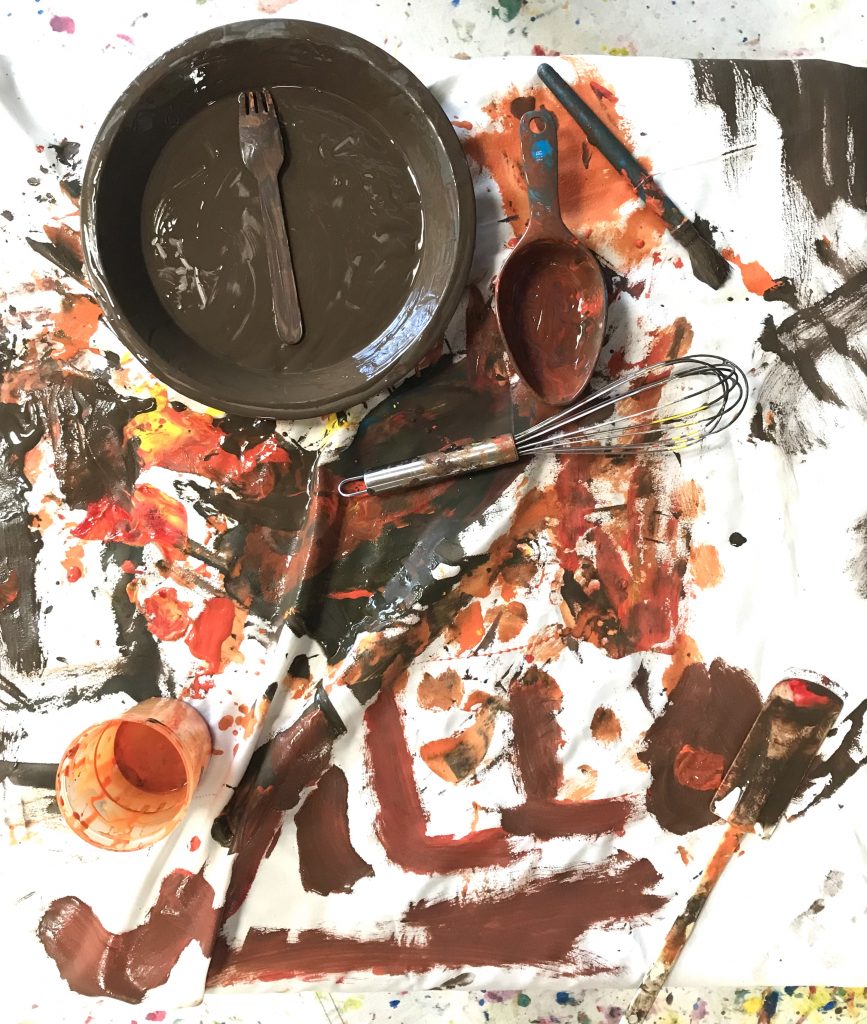
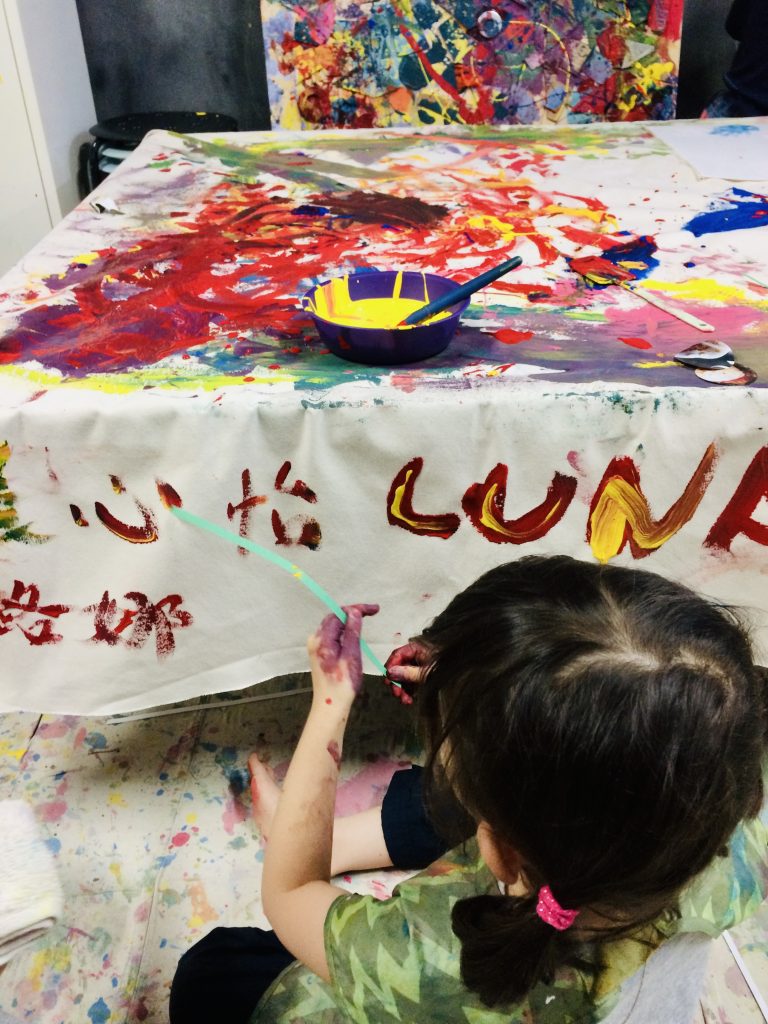
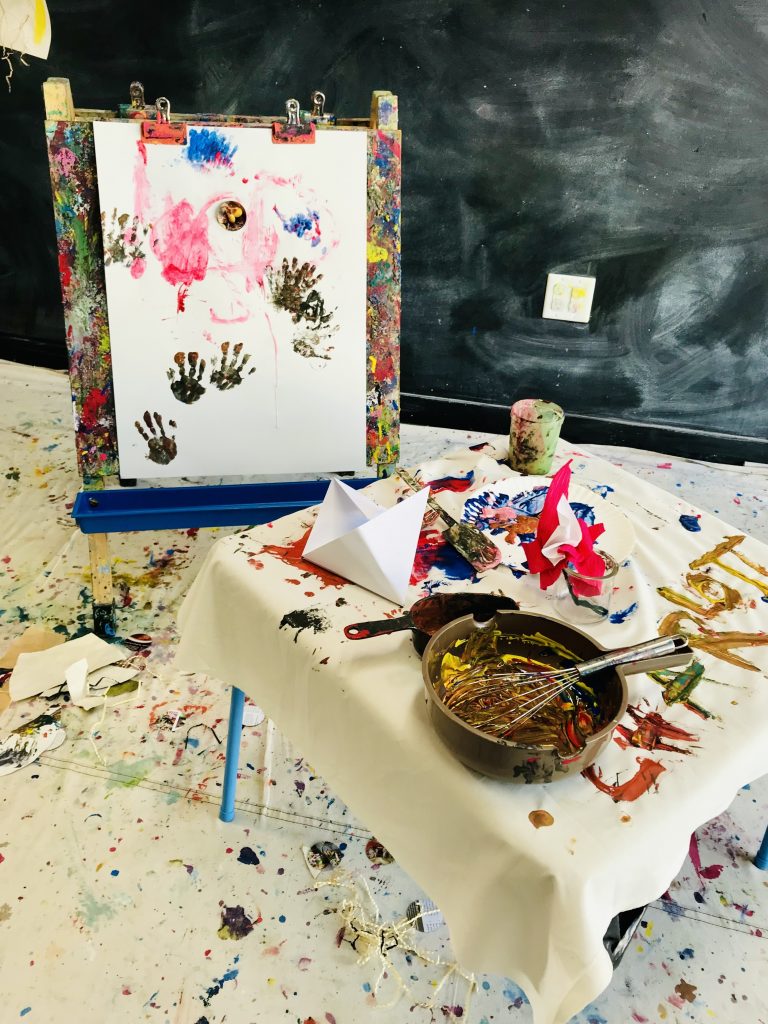
A little dough with beans…
Small, non-plastic objects add another dimension to food-themed dough play with more opportunities for pretend play and creating patterns. With young children for whom dry beans pose a choking hazard, use something else you feel comfortable with (maybe Cheerios).
